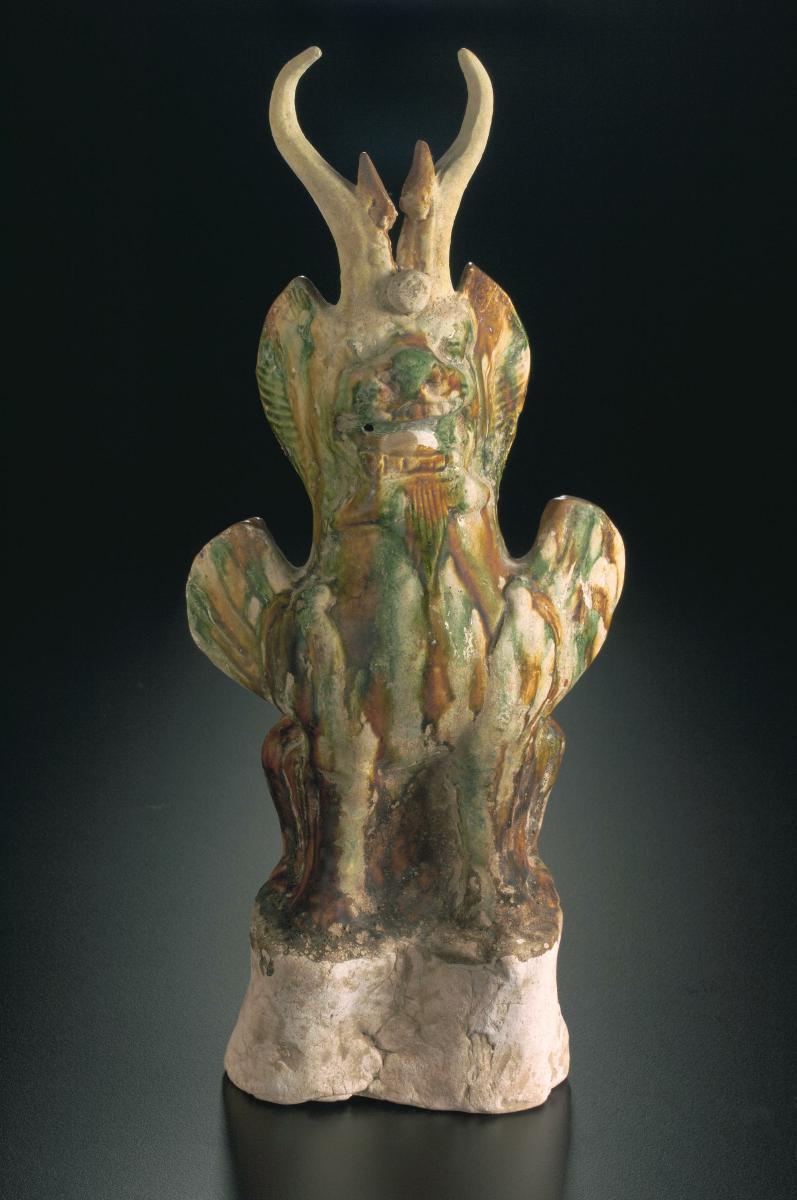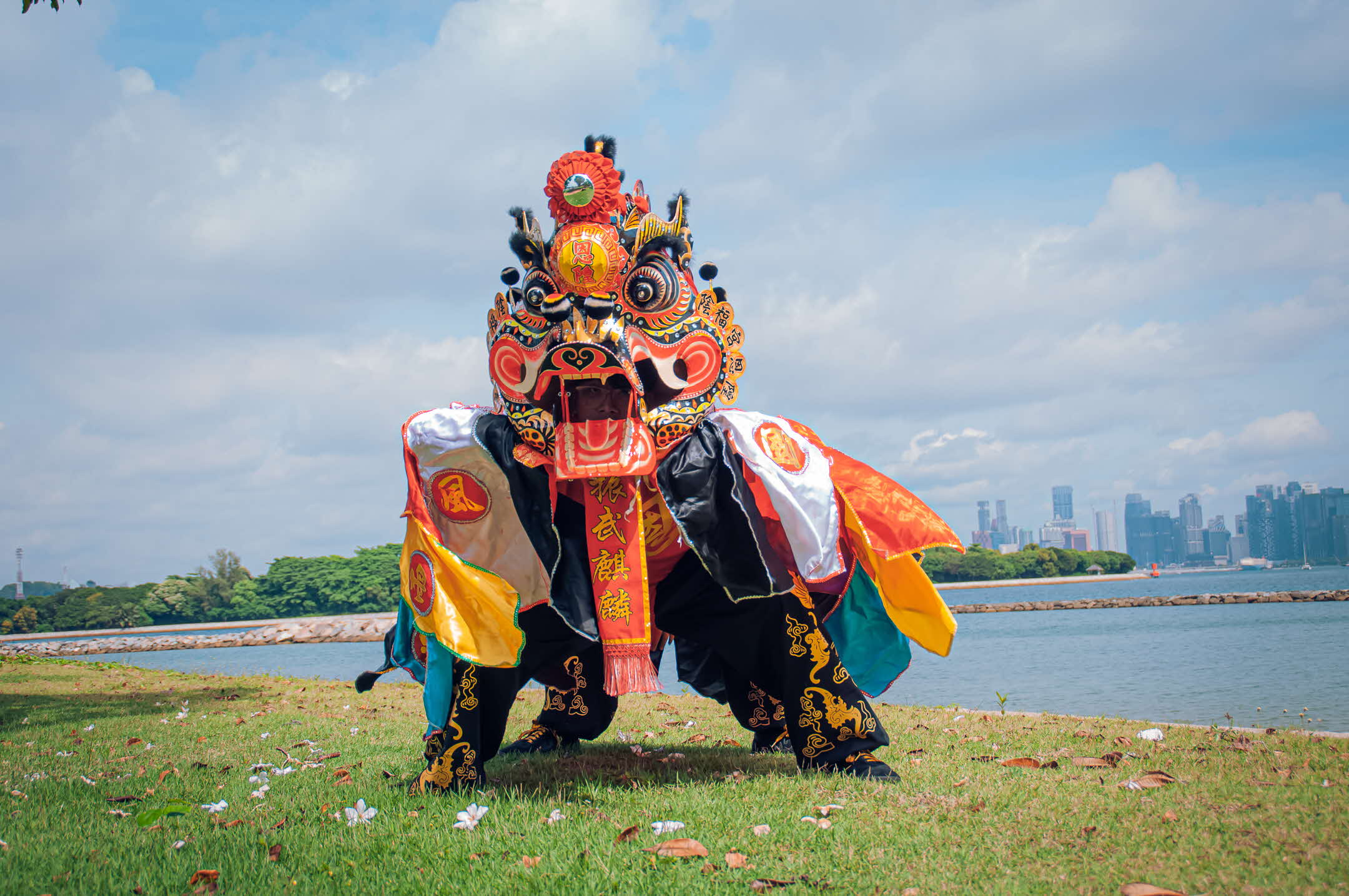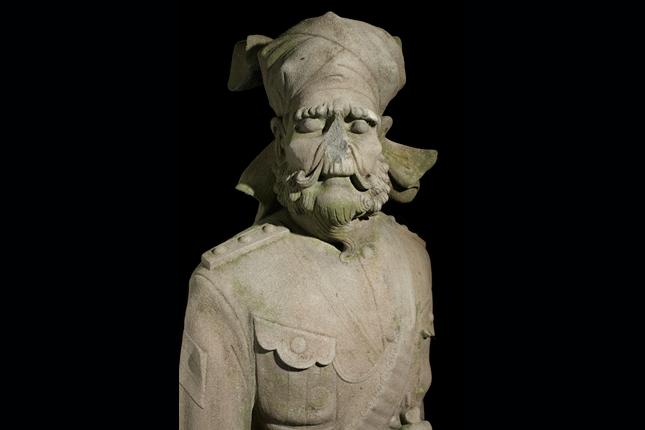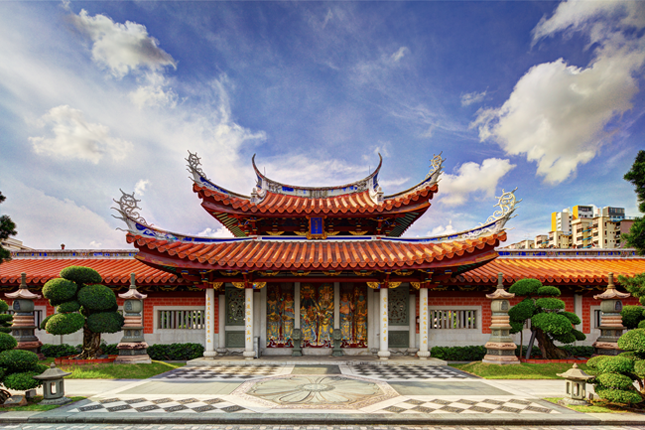x W: 15.2,
x D: 10.8 cm
This beast-like creature is known as Bi Xie the evil dispeller. The figure has curved horms, wings and hooves, combining the features of human and animals. A three-coloured palette of cream, green and amber glazes known as Tang 'sancai', was used to decorate this figure.In ancient China, Chinese mythological animals such as Bi Xie and Tianlu (who is in charge of wealth) were placed in front of tombs to keep evil at bay and to bring in good fortune.Lead glazes were introduced during the Han dynasty (206 BCE-220 CE) and were further developed during the Tang dynasty to include streaky ‘sancai’ (‘three-colour’) glazes of amber and green as depicted on these pieces.These types of objects were made from moulds that are covered in lead glaze. During firing, colours in the glaze mingle with each other naturally to form vertical streaks. These streaks that drip like wax originate from the colouring oxides present in the glaze. Copper oxide forms greens while iron oxide gives brown and yellow.

















